Editor’s Note: Monica Ross and I spent several days on the road through Nevada and across a former wild horse range that has been zeroed out by the BLM under the claims that the presence of wild horses endangers healthy rangelands, and that the land can no longer support horses.
So we went to see for ourselves. What we found were cattle, dead springs, and miles of degraded habitat. In this dispatch, we share what it looked like, what it felt like—and the questions that keep following us home.
Day One. Reno to Eureka.
It’s 9 o’clock in the morning, and we drive through the Virginia Range on our way East from Reno. It’s clear out. Blue skies. Nevada's high desert is teasing us in the distance.
It’s dry as a bone, Monica says. And that’s normal. Their habitat is quickly being consumed by industry. Tesla. Walmart. Switch, a server hosting center.
We come up on one horse a little further into nowhere and wonder why his posture looks so odd. As we pass, we realize he’s digging. A sign he’s searching for food that isn’t there. Should wild horses be expected to survive in a landscape stitched with roads and parking lots, where the only thing they’re finding is asphalt?”
Advocacy groups have for years banded together to implement a humane fertility control program in the form of PZP, a contraceptive vaccine proven not to sterilize but to keep a mare from foaling for up to three years after a booster. The vaccine is administered via a dart gun. It’s relatively harmless, and there are decades of use that prove its efficacy. But the group that’s managed the program for several years just lost their contract with the state, and as Industry invades the landscape, we wonder what’s next for these historic animals.
Fertility control can’t stop bulldozers. Would the program have continued to be a success without whole landscapes being bought, paved, and leveled?
We tune into Adam Bronstein’s podcast, Our Public Lands. It’s Episode #31, and Jonathan Ratner is sharing his story. He’s telling his origin story - how decades ago, at the beginning of his career with the USFS, he documented severe landscape degradation due to livestock, and how his report was thrown out. He tells the host this isn’t an isolated experience. Many ecologists, biologists, and land management specialists working in conservation and environmental groups today are there because the very federal agencies tasked with caring for these lands won’t take a hard look at the destruction from ranching. Or, arguably worse, they are aware of the destruction but turn a blind eye.
Mid-afternoon, we take a detour into Monitor Valley. Oh man, it’s green here compared to the road we’ve just traveled. I can almost smell the sagebrush. So I roll down the window, and I do.
Monica says she has seen several bands of wild horses along this dirt road in the past. We drive and drive and see no mustangs. We laugh about the sunken cost fallacy. Maybe they’re just over this hill. Around this bend. Just 2 more minutes, then we’ll turn around. We continue for 40 minutes deep into the valley, and finally see a dozen wild horses, but no more. Cattle otherwise dot the landscape.
We find the turnoff we scouted ahead of time. We’re aiming to get deep into the Jakes Wash HA, but the road snakes us away from BLM land and onto FS land instead, and we roll with it, because as I say, golly (gahhh leee) this acreage is beautiful.
Juniper and pine flank our left side on steep grades with jutting rock formations. It’s cooler here - maybe just 70 or so degrees. Sagebrush covers the lower meadows deep in a valley to our right. This is a FS-managed grazing allotment, and the forage looks — to my untrained eye — to be plentiful. Greenery greets us at every turn.
But as the sun shifts and we come back into reception, we realize we’re definitely not headed onto the BLM we’d hoped this road would eventually get us back to, so we begin to backtrack.
This is the kind of backcountry where unpaved yet well-maintained roads can quickly deteriorate into forgotten two-track trails and then disappear altogether, leaving no established trail whatsoever.
Just when Monica finds a wide enough spot to turn the truck around, we spot movement up on the left ridge. Wild horses. A band of five. Two black with socks and blazes. One white. One brown and white paint. And a little currently-bay-colored foal. They’re so far away, they’re fazed when they catch wind of us. So we all stare at each other for a few minutes, and while our fascination with them only increases (I’m fumbling to get images of them with my iPhone through a pair of Noccs. Monica vaults her petite frame into the bed of her lifted truck, carrying a camera pack that probably weighs as much as she does. The wild ones go back to their hillside grazing. The foal nurses, hugging close to her mama’s healthy body.
A little further down in a meadow nearly glowing with green, another band grazes on abundant grass.
These are splendid moments, and we’re briefly distracted from our failure to get where we needed to be going. We get the truck turned around and head to our modest hotel in Eureka for the night.
Day Two: Eureka to Jakes Wash
We wake up to the entire town of Eureka congregating for an Independence Day parade. Kids are puttering through parking lots on festive, fladry-laden tractors, faithful cattle dogs hugging their tires. Squeaky clean fire trucks, stark against desert dirt and baby blue sky, are lined up on the side of the road, drawing the gaze of wobbly children craning their necks as their folks claim spots on the sidewalks with folding chairs. American flags are everywhere, trembling, and I’m shivering a little too. It’s brisk out, and the patriotism has my head spinning.
We hustle to grab ourselves each a vat of convenience store coffee (hey, if you’re ever in Eureka, Nevada, I, a self-proclaimed coffee snob, can vouch for the medium body breakfast brew they serve up), and we get outta dodge.
We’re headed back to the same area inside the Pancake Complex, and after an early morning of mapping, we’ve got another two dirt roads to try. I’ve got my Noccs binoculars in my lap, ready to eye anything that could be wild horses on the open range. No luck. But there are cattle.
Jakes Wash Road comes up quick. Monica hangs a right from paved to dirt, the familiar crackle of rock and washboard break the quiet. We’re relieved that this road isn’t headed through a private ranch, as these roads often are, which would complicate entrance to public land. Today we’ve made it where we were aiming to be all along, and it isn’t long at all that we cross two cattle guards and screech to a dusty stop.
There’s a cow carcass decaying in a drying spring directly to our left. There’s nothingness all around us. Well, except for cloven hoof marks and cow patties.
It’s bewildering.
We hop out to document, and my nostrils sting. I’m struck by the silence, too. Nothing rustles or slithers or chirps. We’re the only things moving out here now.
According to our research, cattle graze here every year from November through the end of June. Today is July 4th.
What happened to the cow? It’s apparent to both of us that vehicles have driven to the bottom of the spring to add some sort of gravel or rock in an attempt to damn the flow. There are tire marks everywhere. Questions buzz. Why didn’t they remove the cow? Isn’t this a watering hole for wildlife?
I squeeze through the barbed wire to photograph the plant life on the other side of the fence. The grasses out of reach of cattle nearly hit my hip in many places.
We do find one horse manure pile, maybe 20 yards outside the bank of the spring. Many of the cow poop is in the spring-turned-sludge.
Back into the truck, south down the dirt road, and into a wide open wash we go. What green we witnessed at Carcass Spring is gone. From what we can tell, the acreage we’re traveling through now is supposed to be sagebrush, but all that’s left are skeletal stalks sporadically littering cracked dry earth. And there are patches — almost like crop circles — where some sort of grass or plant is, or was, trying to grow.
“Sheep have been here. This is all from sheep,” Monica says. “This is what Antelope looks like.”
She’s referring to a wild horse herd management complex. A swath of land encompassing more than a million acres East of us, where wild horses are consistently removed under the rationale that there should be fewer of them in order to reach a thriving natural ecological balance.
Thousands of sheep graze on that range. Thousands. And cattle too.
We hop out and document again. I say to Monica that we must be in one of the allotments that the BLM has deemed to be failing landscape health standards. All around us and for miles meeting the hills or horizon, it’s a sea of brown and gray.
We don’t know it at the time, but later, when we debrief at our next hotel, we’ll realize that we were in a grazing allotment that the BLM has determined meets landscape health standards. And we’ll think this has to be a mistake.
It goes on like this for a couple more hours. We drive, everything is sad, we document, and everything gets sadder.
The wind picks up. Bits of earth ping against the truck. Dirt devils swirl, taking full advantage of their rootless paths.
As we turn further into the wash, we finally eye a band of wild horses. Five or so, including a foal. They catch wind of us, and though they’re already hard to focus on through binoculars, they haul in the opposite direction. Between the distant and the dirt and the determined wind, neither of us can get a decent photograph.
It can be a remarkable sight to see wild horses in the middle of nowhere. Exhilarating, breathtaking, heart-pumping. It’s all the things. But witnessing them here, where what forage may have in some past time thrived, our pal of the day, Sadness, chokes the excitement instead.
The Bureau of Land Management deems that Jakes Wash is not suitable for long-term wild horse management due to lack of water and forage. On the facade, this makes sense. We’re witnessing the Lack Of right now.
The day crescendos with several sets of fencing and cattle guards on a road that miles back intersected with Jakes Wash Road. We come upon what we first think is a holding pen for cattle. It is, but beside the abandoned fencing and barbed wire is a gigantic manmade hole in the earth that’s dry as a bone.
It reminds me of this place I used to ride my mountain bike as a kid while living at Edwards AFB in the Mojave Desert. Back then I would imagine I was on my own pump track, rounding the sides of an old bomb test site. I’ve never asked my father what those craters were, but now I might. Since the 'looks-like-a-bomb-went-off' image is back.
Not suitable for long-term wild horse management due to lack of water and forage. It’s been years since wild horses have been designated to roam free here.
According to the 2024 Pancake Complex Herd Management Area Plan Management Evaluation, no wild horses are to be managed within the Jakes Wash HA based on the BLM’s analysis of monitoring data and its determination about habitat suitability, which indicated (and currently indicates) that the HA has insufficient forage, water, space, cover, and reproductive viability to maintain healthy wild horses and rangelands over the long-term.
If Jakes Wash is no longer suitable for wild horses, it’s worth asking what it is suitable for. Because from where we’re standing, there’s nothing healthy about it. What might Healthy look like if livestock didn’t graze here during peak forage season? And exactly how many head of cattle and sheep are we talking about here?
The forage is gone. The water is tampered with. The land looks bombed out.
The wild horses have been gone for years. But the degradation remains.
We’ll be reporting back with what the BLM says about that. And what independent ecologists have to say in return.
We hope you’ll stick around as we continue to cover this issue.





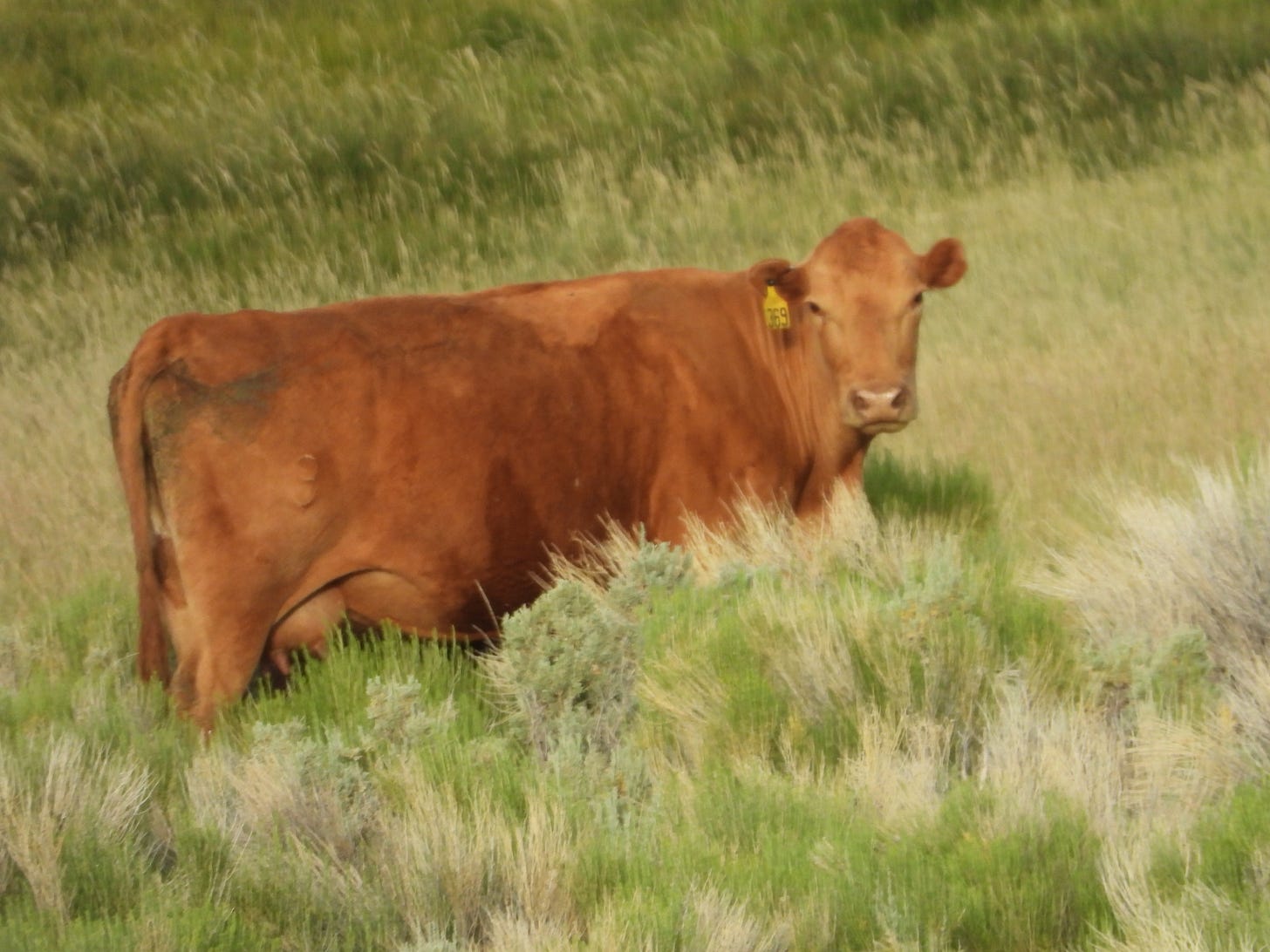

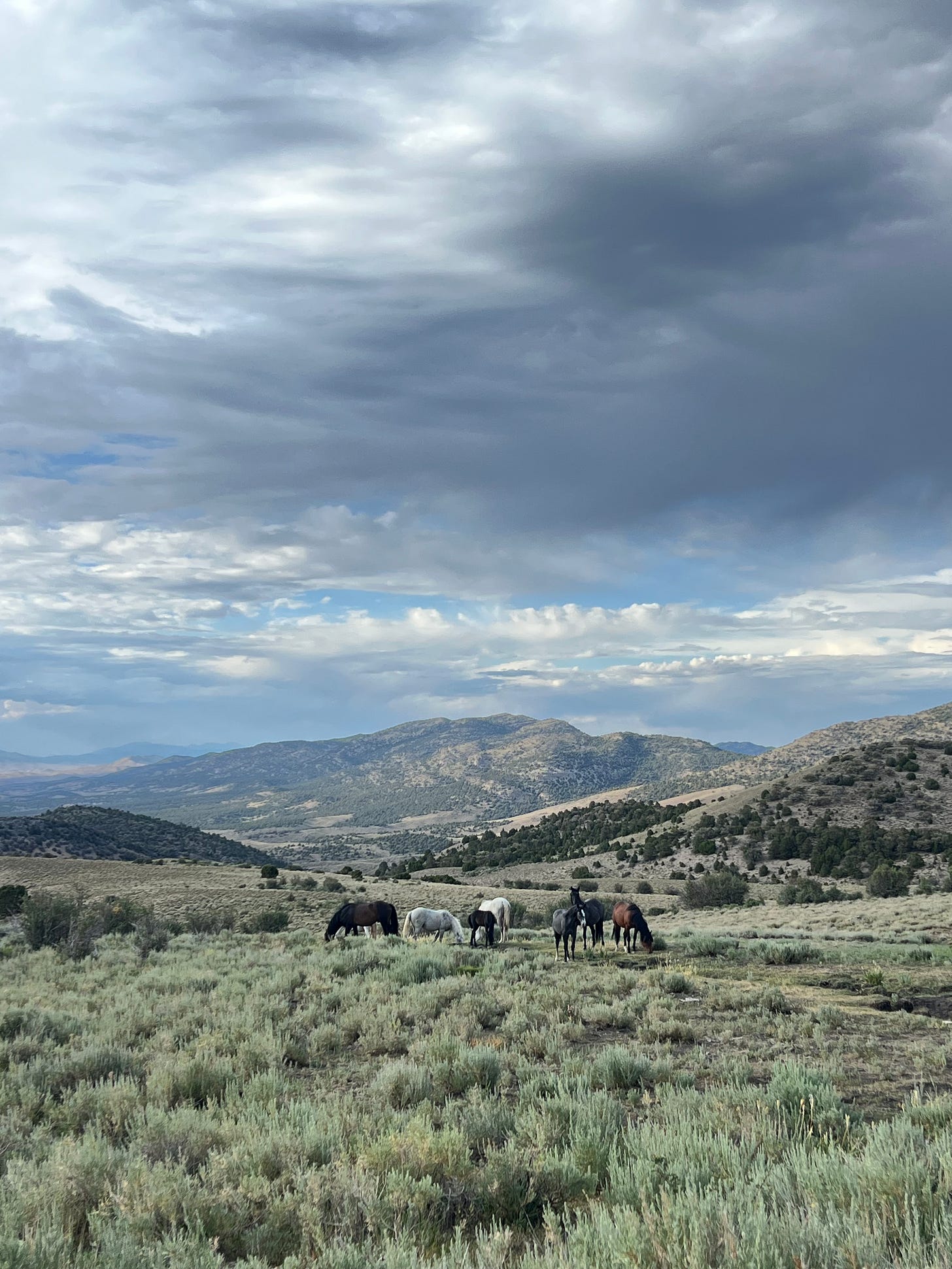
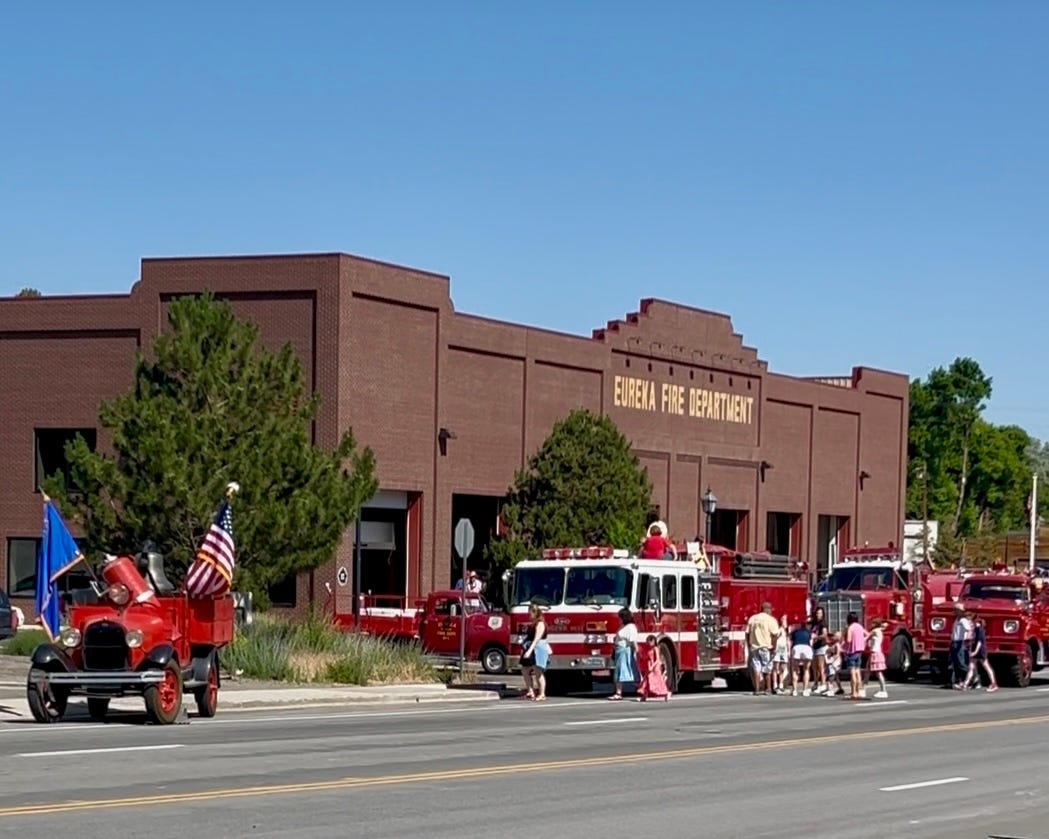
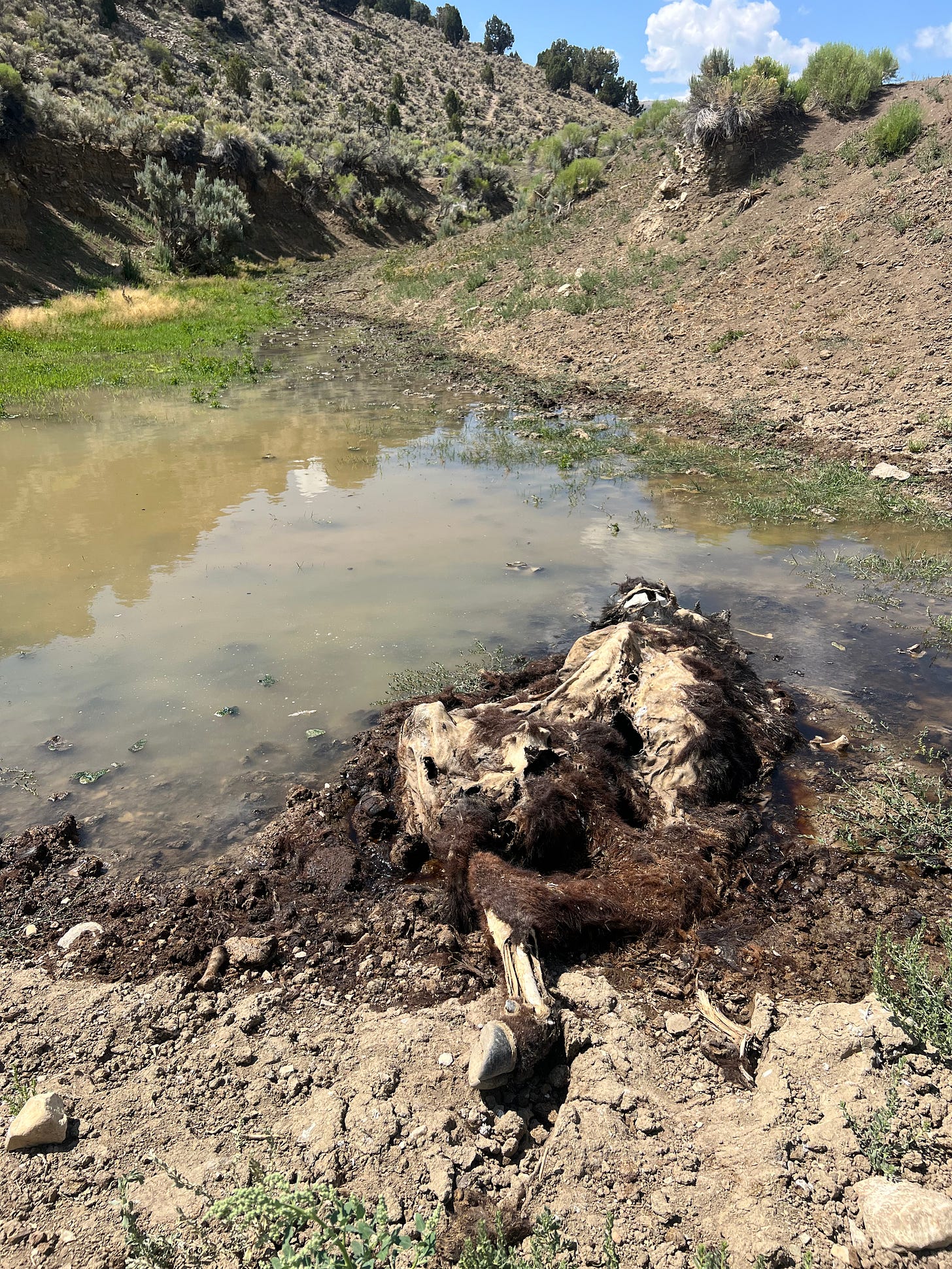



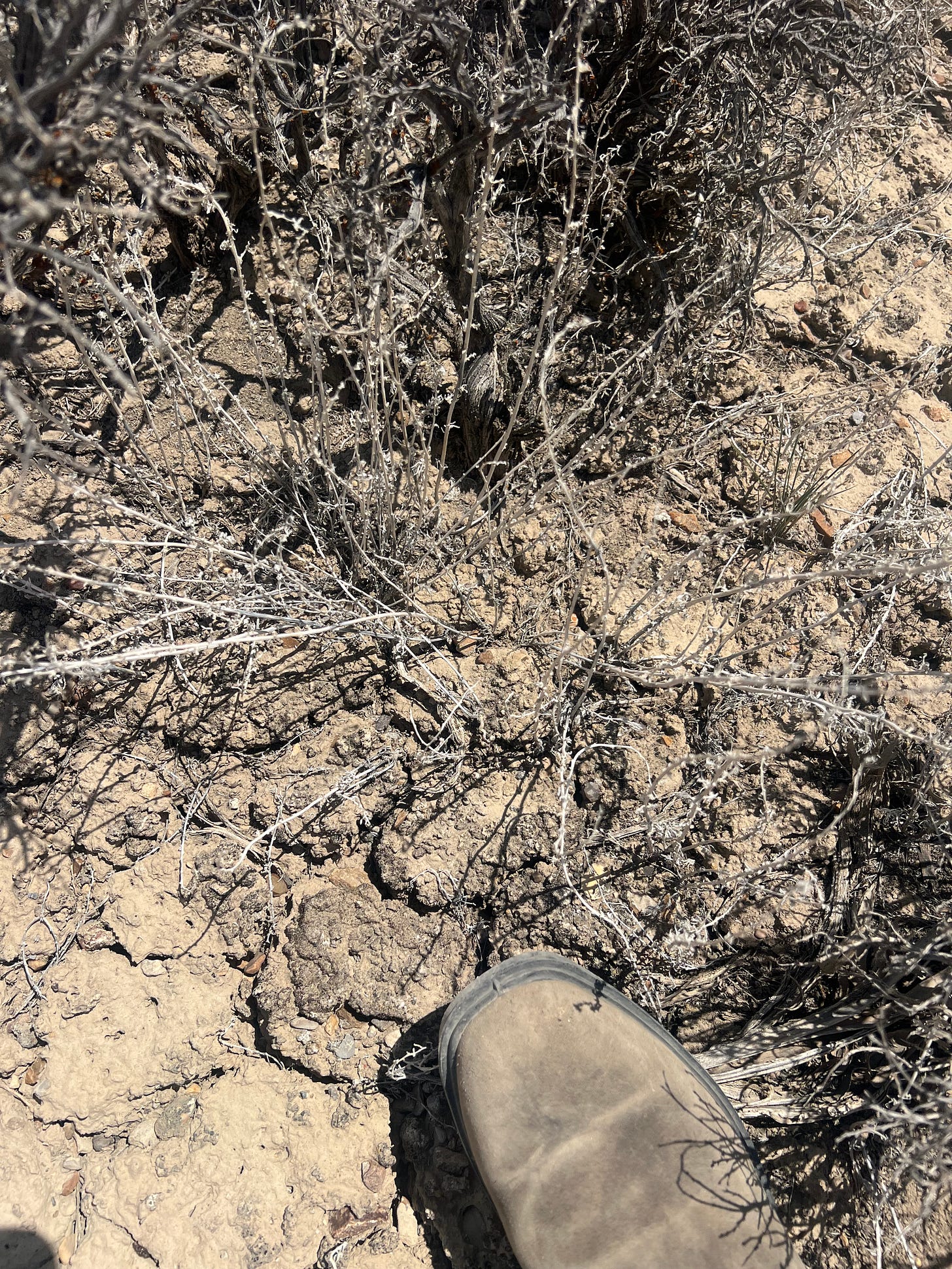



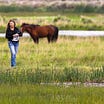
This is great reporting, thank you for actually getting right out there and informing us all.
Thank you Jen and Monica for actually “walking the walk” to show Americans the truth of what livestock is doing to our public lands👏